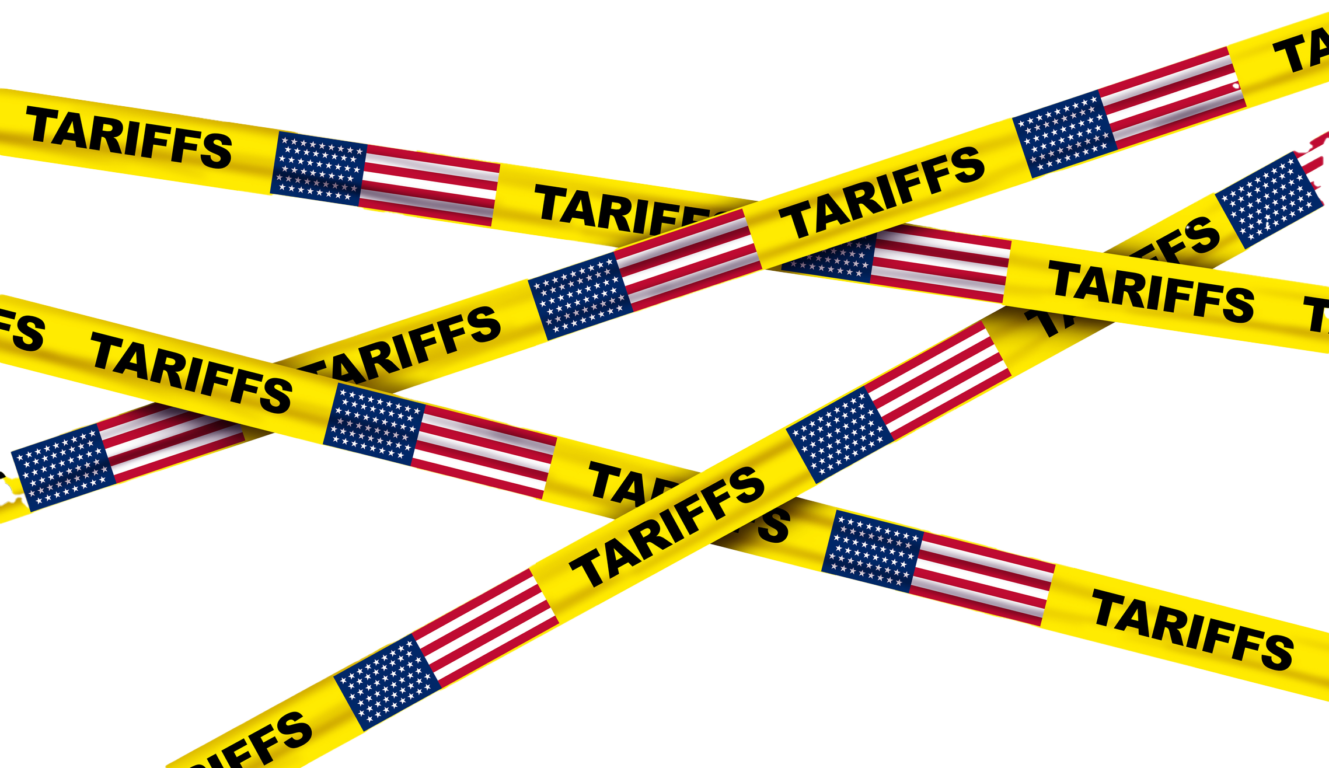Assessing the impact of U.S. tariffs and protectionism on Kenya’s economic future

President Donald Trump’s recent imposition of reciprocal tariffs as part of his “America First” policy has introduced a seismic shift in global trade dynamics, with far-reaching consequences for Kenya. The new tariffs, which establish a baseline 10% duty on all imports into the United States and impose additional duties on countries deemed to have unfair trade practices, have disrupted longstanding trade frameworks.
Kenya has long enjoyed preferential trade terms with the U.S.. However, it now finds itself directly impacted by these changes at a time when the expiration of the African Growth and Opportunity Act (AGOA) is looming.
The African Growth and Opportunity Act, which has allowed many African nations, including Kenya, to export goods to the U.S. duty-free, is now overshadowed by protectionist measures that threaten to reshape the landscape of Kenyan exports. With Kenya facing a 10% tariff on its goods headed to the U.S., industries that have relied on AGOA’s advantages are confronted with a new reality. The timing of this tariff imposition could not be more critical, as it coincides with the expiration of AGOA, raising concerns about the future of Kenyan trade with the U.S.
The Trump administration defends the tariff policy as an essential step to revitalise U.S. domestic manufacturing, correct what it perceives as “unfair trade practices” by other nations, and achieve greater economic independence. The reciprocal nature of these tariffs means that any country imposing tariffs on U.S. goods will face similar or lower tariffs on its exports to the U.S., thereby restoring balance to trade relations. While this policy is part of a broader strategy to reassert U.S. economic dominance, its immediate effect is a direct challenge to countries like Kenya, which have long benefited from preferential trade terms with the U.S.

Impact on Kenya’s trade and key export sectors
Kenya’s trade relations with the U.S. have been robust, with total trade valued at USD 1.5 billion in 2024. However, this relationship is now under strain. Kenyan exports to the U.S. declined by 17.5% from 2023, amounting to USD 737.3 million, while U.S. exports to Kenya increased by 61.4%, reaching USD 782.5 million. The imposition of tariffs now threatens to erode the competitiveness of Kenyan products in the U.S. market, particularly textiles, coffee, tea, and horticultural goods, which had previously enjoyed duty-free access under AGOA.
The textile industry in Kenya, which has significantly benefited from AGOA, faces the starkest challenges. With profit margins ranging from 15% to 30%, the additional 10% tariff could potentially erode these margins. Such a shift could result in reduced export volumes, job losses in factories, and a significant decrease in foreign revenue. This could further jeopardise the livelihoods of thousands of workers who depend on the textile sector for employment.
Increasing costs for importers
On the other hand, Kenyan businesses that rely on imports from the U.S., particularly in sectors such as technology, pharmaceuticals, and industrial equipment, will face higher costs. The tariffs will directly increase operational expenses, potentially leading to higher prices for consumers. This poses a significant concern for Kenya’s rapidly growing tech sector, which has relied on imports from the U.S. for hardware, software, and cloud services.
Impact on Kenya’s digital economy
Kenya’s burgeoning digital sector, often referred to as “Silicon Savannah,” is especially vulnerable to the tariff impositions. The new tariffs are likely to result in increased costs for digital infrastructure projects, which are critical to Kenya’s tech ecosystem. National initiatives such as the Digital Superhighway, which aims to expand internet access to schools, health centres, and rural areas, could face delays or scaling down due to the higher costs of equipment like routers, servers, and data centre infrastructure.
Every day, consumer tech products will also become more expensive as a result of these tariffs. Items like smartphones, laptops, and software packages such as Microsoft Office 365 or Adobe Creative Cloud could see price hikes. This will place a strain on households and businesses that rely on affordable technology. E-commerce, which has become a popular way for many Kenyans to access tech products from platforms like Amazon, will also suffer. Increased duties and additional fees could raise the final cost of these products, making them less accessible to the average consumer.
Small and medium-sized enterprises (SMEs) and startups, particularly in tech-heavy fields such as e-commerce and fintech, often struggle to afford essential digital tools. Laptops, cloud services, and other software tools may become inaccessible to many small businesses, stifling their growth potential and innovation.
As Kenya continues to invest in its digital economy, the rising cost of U.S. tech imports will pose significant barriers to this progress. Many local businesses are transitioning to cloud platforms like Amazon Web Services, Google Cloud, and Microsoft Azure; however, the increased costs associated with maintaining these platforms may delay the adoption of cloud technology and artificial intelligence, ultimately slowing the growth of Kenya’s digital sector.
Geopolitical implications
Beyond the economic strain caused by the new tariffs, Kenya faces broader geopolitical implications. The country’s trade balance with the U.S. and the broader global economy is already under pressure. The weakening of the Kenyan Shilling (KES) could exacerbate inflationary pressures, making imports more expensive and eroding the purchasing power of Kenyan consumers.
As the country grapples with these tariff-induced challenges, there is growing speculation that Kenya may shift its trade focus toward other global partners, particularly China. A delegation currently in China, led by the Cabinet Secretary of the National Treasury, Hon. Mbadi, and Dr. David Ndii, Chairperson of the President’s Economic Council, signals a potential pivot to the East. This could be an early indication of Kenya’s intention to recalibrate its trade relations in response to the new realities of U.S. tariffs.
The path forward
In light of the looming downturn in key export sectors, Kenya must urgently reassess its trade strategy to adapt to the new economic landscape. Diversifying export markets is a crucial step. Strengthening ties with the African Continental Free Trade Area (AfCFTA), China, and the European Union will help reduce Kenya’s dependence on the U.S. for trade.
Simultaneously, Kenya must look inward and bolster its local manufacturing capabilities. Investing in manufacturing across key sectors, such as textiles, agriculture, and technology, will help reduce the country’s reliance on imports and provide greater economic stability. Diplomatic engagement with the U.S. to negotiate exemptions or bilateral agreements should also be a priority to mitigate the worst effects of the tariffs.
To support the growing digital economy, Kenya could implement tax incentives or import substitution strategies to enhance its resilience. Promoting value addition—focusing on processing raw exports domestically—will help create higher-margin products and improve Kenya’s position in global markets.
Finally, stabilising the Kenyan Shilling will be essential. Strong fiscal and monetary policies will be necessary to manage the currency’s volatility and prevent inflation from further eroding consumer purchasing power.
In conclusion, the U.S. administration’s new tariff policy represents a pivotal moment for global trade, one that could have lasting consequences for Kenya. With AGOA set to expire and new trade restrictions already in place, Kenya faces the urgent task of pivoting to new markets, strengthening local manufacturing, and engaging diplomatically to secure its economic future. The coming months will be critical as Kenya navigates these uncertain waters and adapts to a global trade environment that is increasingly shaped by protectionism.

